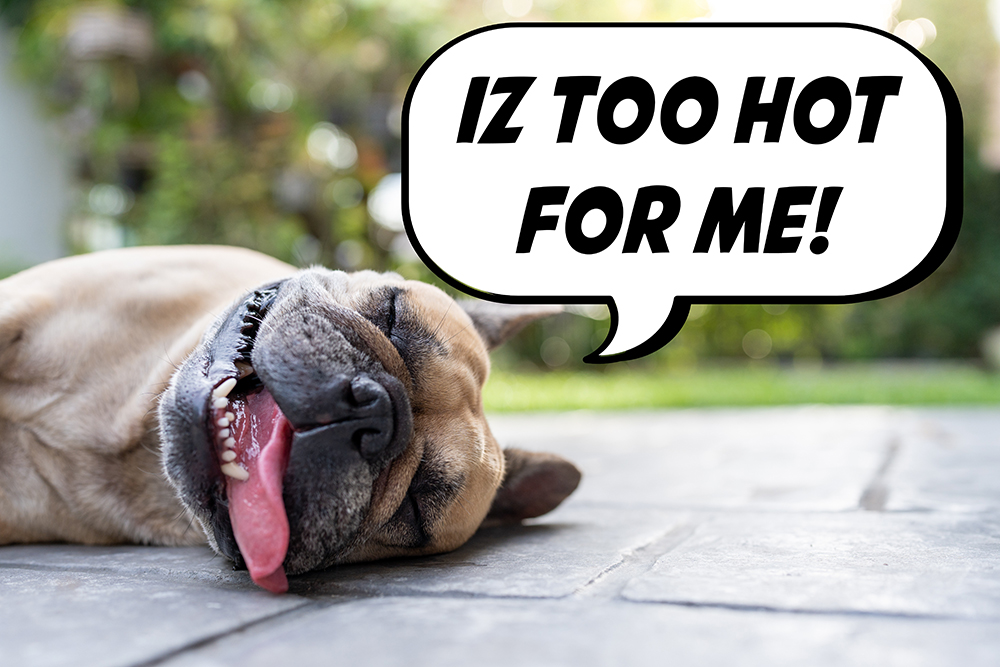
Hot Weather, Hotter Pavement: Summer Pet Safety Tips Every Governors Place Homeowner Should Know
As summer arrives in full force in Governors Place and across the Greater Houston area, so do the hidden hazards for our four-legged family members. From blistering pavement to sweltering vehicles, pets—especially dogs—face life-threatening conditions in mere minutes if proper precautions aren’t taken.
Local animal health experts are raising awareness among homeowners about the most common but preventable heat-related dangers to pets during the hottest months of the year. Keeping your pet cool isn’t just thoughtful—it’s critical for their health and safety.
Never Leave Pets in Parked Cars
Even a quick errand can turn deadly. According to the American Veterinary Medical Association, the temperature inside a parked car can rise by 20°F in just 10 minutes—even with the windows cracked. On a 90-degree day, that means your car could reach 110°F in the time it takes to grab a gallon of milk.
Heatstroke in dogs can begin when their body temperature reaches 104°F, and organ failure can begin shortly after. Signs of overheating include excessive panting, drooling, disorientation, vomiting, and collapse. If your pet exhibits any of these symptoms, seek emergency veterinary care immediately.
Protecting Paws from Hot Surfaces
Concrete, asphalt, and even metal truck beds can reach dangerously high temperatures during the afternoon hours. If it’s too hot for your hand, it’s too hot for their paws. A good rule of thumb: press your palm to the pavement for 7 seconds. If it’s uncomfortable, skip the walk or opt for grassy areas and early morning or evening outings.
Dog booties can offer protection, but many pets find them uncomfortable at first—introduce them gradually indoors before using them on hot days. Avoid walking your dog during peak heat hours (usually between 10 a.m. and 4 p.m.), and prioritize shaded paths and parks when possible. Check out these highly-rated dog booties to protect your pup's paws this summer.
Mobile Sidebar Ad
Hydration Is Non-Negotiable
Dehydration is one of the leading summer dangers for pets left outdoors for extended periods. Water bowls can tip or evaporate quickly in direct sunlight, leaving pets vulnerable. Always ensure pets have access to a shaded area and a steady supply of fresh, cool water—ideally in a tip-resistant, non-metal bowl that won’t become hot to the touch.
When taking your dog on long walks or spending time outside away from home—such as at parks, trails, or community events—don’t forget to pack water and a portable travel bowl like this one. Dogs lose moisture quickly through panting and can overheat faster than humans. Having access to water on the go can help prevent dehydration and make outdoor time safer and more enjoyable for everyone.
Cooling Tools to Keep Pets Comfortable OutdoorsOutdoor pets, especially those in backyards or on patios, should never be left alone for long stretches in the heat. Even a shaded area can become dangerously warm as the day progresses. If pets must be outdoors, set a timer to check on them every 15–30 minutes.
To help keep them cooler and more comfortable, consider providing an elevated pet bed with a breathable mesh bottom that allows air to circulate beneath their body, rather than a heat-retaining cushion. Special cooling pads or mats designed for pets can also offer relief by drawing heat away from their body—these can be placed in shady areas or inside covered kennels to enhance comfort. |
Beware of Overhydration from Kiddie Pools
While small plastic pools may seem like a fun and refreshing option for dogs to cool off, they come with their own hidden danger: water intoxication. When dogs spend extended time in kiddie pools, they may inadvertently drink large quantities of water while playing or splashing. Ingesting excessive amounts of water—especially in a short time—can lead to a potentially fatal condition known as hyponatremia, or water toxicity.
Symptoms include bloating, vomiting, staggering, lethargy, dilated pupils, and seizures. Water intoxication is rare but serious. If you provide a pool for your dog, monitor playtime closely, limit how long they stay in the water, and discourage them from drinking too much while playing. Always offer breaks and fresh drinking water on the side.
Mobile Sidebar Ad
Know the Signs of Heatstroke and Dehydration
As temperatures soar, knowing the early warning signs of heat exhaustion and dehydration can make all the difference. Look out for:
- Excessive panting or difficulty breathing
- Bright red gums or tongue
- Lethargy or confusion
- Dry nose or sunken eyes
- Rapid heart rate or vomiting
If you suspect your pet is suffering from heatstroke, move them to a cool area immediately, offer water (but do not force them to drink), and apply cool—not ice-cold—compresses to their chest and belly. Contact your veterinarian or a local emergency clinic without delay.
Homeowner Responsibility and Community Awareness
For Governors Place homeowners with fenced yards, pets can sometimes slip under the radar during a busy day. Neighborhood advocates urge residents to not only monitor their own pets but also keep an eye out for animals who may be suffering in neighboring yards or parked cars. If you see a pet in distress, call local animal control or emergency services.
By taking these simple steps—never leaving pets in cars, protecting paws from hot surfaces, providing constant access to water and shade, and learning the signs of heat-related illness—homeowners can help ensure their furry companions stay safe and comfortable all summer long.
Stay tuned to My Neighborhood News for more seasonal safety tips and local updates to keep your family—and your pets—protected all year long. And if you found this article helpful, share it with your friends, relatives and neighbors on social media!
Editor's Note: My Neighborhood News may earn commissions from products used through Amazon-affiliate links included in this article.
 Tiffany Krenek has been on the My Neighborhood News team since August 2021. She is passionate about curating and sharing content that enriches the lives of our readers in a personal, meaningful way. A loving mother and wife, Tiffany and her family live in the West Houston/Cypress region.
Tiffany Krenek has been on the My Neighborhood News team since August 2021. She is passionate about curating and sharing content that enriches the lives of our readers in a personal, meaningful way. A loving mother and wife, Tiffany and her family live in the West Houston/Cypress region.






